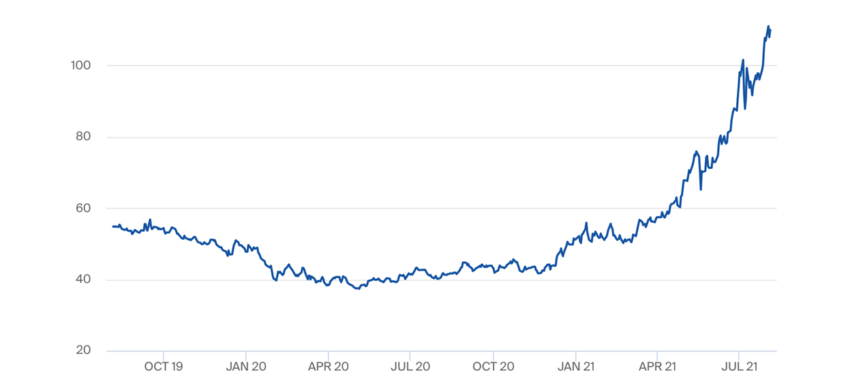Energy Markets Briefing note – Winter 21
Why we think gas prices can go up (and why we might be wrong)
Global gas markets are in uncharted territory which is not surprising considering how tumultuous 2020 was for the world. The gas supply correction last year, following relatively minor gas demand destruction, has had the unintended consequence of a super-tight gas market across the globe in 2021. There is simply not enough gas supply reaching the desperate demand centres throughout the northern and southern hemispheres right now. Japan’s nuclear fleet is struggling to meet soaring air-conditioning demand (“turn up the gas turbines!”); Brazil’s drought-stricken hydro-electric generators need alternative power (“turn up the gas turbines!”); European storage sites need replenishing ahead of winter (“pay up for LNG imports”). Not to mention record breaking gas numbers in China, Spain, Mexico and elsewhere this year. However, should we be looking at this as a short term supply squeeze, caused by a perfect storm of demand hikes coupled with lagging supply?

There are two outcomes from here:
- A continuation of fear and a risk premium which feeds on scarcity, which can carry on as long as consumers have no alternative than to buy more gas to keep the lights and heating on
- A return to more ‘normal’ supply/demand fundamentals and pricing
The European, Asian and US gas markets certainly appear to be pricing in scenario 1, with very real fears that sustained heatwaves, an active hurricane season, and a cold fourth quarter will result in real gas shortages. But what happens if the weather becomes less extreme? What if the heat dissipates in Asia and LNG storage tanks in Tokyo, Jiangsu, Samcheok are all full? What if the Atlantic hurricane season is not like last year (remember, 2020 was a 1 in 100 year event for tropical storms)? What if October and November are warmer than normal in Europe and the US?
If the above ‘return to normal’ scenario develops, coupled with an increase in European imports from Russia in the fourth quarter, then gas, power and carbon prices will surely fall. Perhaps a 50% retracement could be on the cards over the next three to four months – however, this would still leave gas prices at a relatively high level (e.g. December UK gas could ‘collapse’ and lose 50% of its price rise yet still be at 80p/therm).
If scenario 1 is the outcome, and the pattern of extreme weather and unresponsive gas supply continues for the remainder of the year, then the upside to UK, EU, US and Asian gas prices is almost unimaginable. Keep an eye on those weather forecasts.
Please contact mitieenergy_rms@mitie.com for further advice
Read next
Mitie’s latest ESG report reveals positive strides towards a sustainable future
Mitie has published its latest ESG report, which provides insights into its progress towards achieving its ambitious ESG goals over the past Financial Year (“FY23”). The report highlights the positive strides Mitie has made…
Andy Street officially opens Mitie’s state-of-the-art Midlands Hub
Mitie’s Midlands Hub in Bickenhill, Birmingham, has been officially opened by Andy Street, Mayor of the West Midlands. As well as acting as the base for Mitie’s Central Government & Defence business, the site…
Mitie releases e-book to tackle the five biggest challenges to reaching net zero
Mitie’s latest e-book, released today, tackles the five biggest challenges to reaching net zero, and shares insights on how organisations can overcome each one. As the UK’s leading facilities management company, Mitie’s energy management,…
Mitie Foundation celebrates 10th anniversary
The Mitie Foundation is celebrating its 10th anniversary, having spent the last decade supporting disadvantaged groups in overcoming barriers to employment. The Foundation also supports the communities in which Mitie colleagues live and work,…
 Skip to content
Skip to content